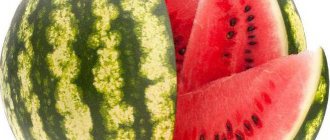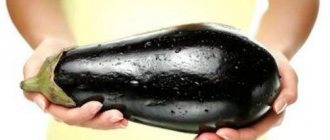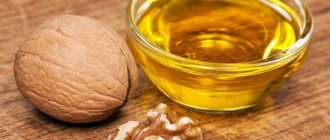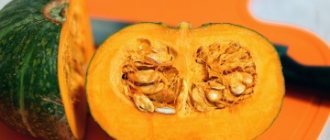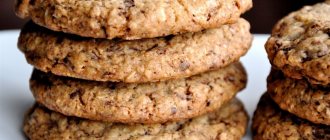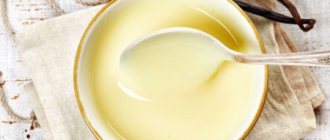During pregnancy, a woman should be especially attentive to her health, monitor what foods she consumes, and maintain the vitamin balance in her body.
Often, to cope with stressful situations, expectant mothers resort to traditional medicine, believing that they have no contraindications.
Hawthorn is considered a common remedy to relieve nervous tension and irritation.
What effect does hawthorn have on the mother’s body?
During the period of bearing a child, the female body is completely rebuilt and is subjected to serious stress.
This also affects nervous tension. The woman becomes more emotional and mood swings often occur. Hawthorn helps to cope well with this problem.
This plant is called a natural first aid kit; its chemical composition surprises with its uniqueness.
It contains a whole complex of vitamins: A, D, E, P, K, B vitamins, and also microelements such as zinc, magnesium, potassium, copper, phosphorus, iron, calcium. Such a rich composition has a positive effect on all body functions.
Rest and proper sleep are important for pregnant women. Fresh hawthorn fruits or tea brewed from them will help cope with insomnia, reduce the excitability of the nervous system and have a sedative effect.
This plant has a beneficial effect on the functioning of the heart, improves blood flow, has a vasodilating effect, and normalizes the rhythm of heart contractions.
Many women experience vascular diseases during pregnancy. And here we cannot do without the miraculous properties of hawthorn. It reduces cholesterol levels and normalizes blood clotting, preventing the formation of plaques.
Flower tea helps relieve swelling, and berry infusions are good for the digestive system.
The medicinal plant can normalize high or low blood pressure, so it is used in recipes for hypertension and hypotension.
What effect does hawthorn have on a child’s body?
Pediatricians do not recommend giving hawthorn to children under 12 years of age. The child's body is in the process of formation. His metabolic processes work much faster than those of an adult.
It is impossible to predict what effect hawthorn will have on a fragile organism.
The plant is recommended for children in the following cases:
Only a pediatrician can prescribe the correct treatment and dosage appropriate for the child’s age.
Is it possible to take hawthorn while breastfeeding?
After the birth of a baby, a woman especially needs recovery.
It is necessary to carefully select the diet, since all foods consumed by the mother are broken down into elements and end up in breast milk.
The effect of many substances on the baby’s body may not be the most favorable, from digestive problems to allergic reactions.
Hawthorn has a beneficial effect on breast milk production. It is recommended to use tea not with berries, but with plant petals. It is best to start using it after the child is six months old. During this period, the baby’s body will become stronger and it will be easier to tolerate new components.
Hawthorn during breastfeeding – are there any restrictions on use?
During pregnancy, a woman should be especially attentive to her health, monitor what foods she consumes, and maintain the vitamin balance in her body.
Often, to cope with stressful situations, expectant mothers resort to traditional medicine, believing that they have no contraindications.
Hawthorn is considered a common remedy to relieve nervous tension and irritation.
During the period of bearing a child, the female body is completely rebuilt and is subjected to serious stress. This also affects nervous tension.
The woman becomes more emotional and mood swings often occur. Hawthorn helps to cope well with this problem.
This plant is called a natural first aid kit; its chemical composition surprises with its uniqueness.
It contains a whole complex of vitamins: A, D, E, P, K, B vitamins, and also microelements such as zinc, magnesium, potassium, copper, phosphorus, iron, calcium. Such a rich composition has a positive effect on all body functions.
Rest and proper sleep are important for pregnant women. Fresh hawthorn fruits or tea brewed from them will help cope with insomnia, reduce the excitability of the nervous system and have a sedative effect.
This plant has a beneficial effect on the functioning of the heart, improves blood flow, has a vasodilating effect, and normalizes the rhythm of heart contractions.
Many women experience vascular diseases during pregnancy. And here we cannot do without the miraculous properties of hawthorn. It reduces cholesterol levels and normalizes blood clotting, preventing the formation of plaques.
Flower tea helps relieve swelling, and berry infusions are good for the digestive system.
The medicinal plant can normalize high or low blood pressure, so it is used in recipes for hypertension and hypotension.
Hawthorn as a medicine has its contraindications. Before starting treatment, it is recommended to consult a doctor.
Contraindications
In some cases, the use of hawthorn is strictly prohibited. This can harm not only the expectant mother, but also the baby in the womb.
Contraindications for use:
Hawthorn tincture is usually prepared using alcohol. Alcohol-containing products are prohibited for pregnant women in any form.
What effect does hawthorn have on a child’s body?
Pediatricians do not recommend giving hawthorn to children under 12 years of age. The child's body is in the process of formation. His metabolic processes work much faster than those of an adult.
It is impossible to predict what effect hawthorn will have on a fragile organism.
The plant is recommended for children in the following cases:
- hyperactivity;
- insomnia;
- tachycardia;
- diarrhea.
Only a pediatrician can prescribe the correct treatment and dosage appropriate for the child’s age.
Is it possible to take hawthorn while breastfeeding?
After the birth of a baby, a woman especially needs recovery.
It is necessary to carefully select the diet, since all foods consumed by the mother are broken down into elements and end up in breast milk.
The effect of many substances on the baby’s body may not be the most favorable, from digestive problems to allergic reactions.
Hawthorn has a beneficial effect on breast milk production. It is recommended to use tea not with berries, but with plant petals. It is best to start using it after the child is six months old. During this period, the baby’s body will become stronger and it will be easier to tolerate new components.
Monitor your child's reaction after introducing a new product. Hawthorn is an allergenic product.
In the pharmacy you can find hawthorn in different forms:
- pills;
- tincture based on ethyl alcohol;
- dried fruits;
- flowers.
The tablets are placed under the tongue and dissolved until completely dissolved. Swallowing tablets and drinking water is not recommended. The standard course of treatment is twenty days, but it can be increased by a specialist.
Hawthorn tincture should be consumed strictly after meals, 2-3 times a day. Usually 20-30 drops are dissolved in 100 ml of water. The course has no strict restrictions. Discontinuation of the drug occurs after the condition improves.
A decoction is made from the fruits. For 200 ml of water, use 1 tablespoon of dried fruits, bring to a boil, and then leave for 3 hours. Only enamel dishes are suitable for cooking. It is recommended to take 20 ml 3-4 times a day, 30 minutes before meals.
You can make a tincture at home from fresh berries. Take 50 g of fruit per 200 ml of water. Pour pre-heated water into a thermos, add chopped hawthorn and leave for about an hour. The tincture is consumed 50 g in the morning and evening.
Tea made from the flowers and fruits of hawthorn is very popular. It can be brewed, combined with other beneficial herbs and berries, or as a single component. This decoction is prepared according to the classic black tea recipe.
For heart failure, juice from hawthorn berries will be very useful.
Take a glass of fresh or frozen berries, chop and mix with water.
The resulting mass must be heated to 30 degrees and squeezed through gauze. Take 1 tablespoon twice a day an hour before meals.
Tea made from hawthorn berries and St. John's wort will help eliminate feelings of anxiety and irritation. Mix the plants in equal proportions and pour boiling water for 15 minutes.
An infusion of hawthorn fruit and peppermint will cope with the symptoms of heartburn due to gastritis. To prepare, mix 1 teaspoon of each component and pour a glass of hot water for half an hour.
An infusion of flowers will help digestion. It is prepared very simply: 1 tablespoon per glass of boiling water, leave for 1 hour. Use 20 ml one hour before meals.
Hawthorn honey
Hawthorn honey is quite rare. This is one of the most valuable varieties of honey; it has unique properties and affects almost all functions of the body.
This honey is especially recommended for use after heart attacks and strokes, for heart failure and arrhythmia, for hypertension, etc.
Like any honey, it is also useful for colds and sore throats.
It is better to use this product in dosage. For adults, the recommended daily dose is two tablespoons, for children – two teaspoons.
Hawthorn jam
My favorite treat from childhood is jam. It is not difficult to prepare it from hawthorn; you need to add 0.5 kg of sugar to 1 kg of berries and leave it like that overnight. Then boil for 30 minutes and repeat this procedure after 6 hours.
Hawthorn compote
Rinse 200 grams of berries thoroughly and place in a sterilized jar. Prepare syrup, 350 grams of sugar per 3 liters of water. Pour the syrup into a jar of fruit and roll up.
Hawthorn syrup
A very tasty and healthy delicacy is hawthorn syrup. It is very easy to prepare.
You need to take 1 kg of berries, 1 liter of water and cook until soft.
Then you need to strain everything through cheesecloth, add 1 kg of sugar and cook until the product thickens, adding a little citric acid at the very end.
There is no doubt that hawthorn has unique properties that can have a preventive and therapeutic effect on our body.
But, like any medicine, it must be used with caution, knowing the limits and contraindications.
For serious illnesses, only a doctor can determine the correct dosage and prescribe a course of treatment.
Source: https://momjournal.ru/kormlenie/grudnoe-vskarmlivanie/boyaryshnik-pri-grudnom-vskarmlivanii.html
Instructions for use
- pills;
- tincture based on ethyl alcohol;
- dried fruits;
- flowers.
The tablets are placed under the tongue and dissolved until completely dissolved. Swallowing tablets and drinking water is not recommended. The standard course of treatment is twenty days, but it can be increased by a specialist.
Hawthorn tincture should be consumed strictly after meals, 2-3 times a day. Usually 20-30 drops are dissolved in 100 ml of water. The course has no strict restrictions. Discontinuation of the drug occurs after the condition improves.
A decoction is made from the fruits. For 200 ml of water, use 1 tablespoon of dried fruits, bring to a boil, and then leave for 3 hours. Only enamel dishes are suitable for cooking. It is recommended to take 20 ml 3-4 times a day, 30 minutes before meals.
You can make a tincture at home from fresh berries. Take 50 g of fruit per 200 ml of water. Pour pre-heated water into a thermos, add chopped hawthorn and leave for about an hour. The tincture is consumed 50 g in the morning and evening.
Tea made from the flowers and fruits of hawthorn is very popular. It can be brewed, combined with other beneficial herbs and berries, or as a single component. This decoction is prepared according to the classic black tea recipe.
Hawthorn during lactation - reviews
Due to the fact that babies’ reactions to various herbal remedies are individual, reviews about taking hawthorn during lactation are different: for some, plant-based remedies helped, while others note a negative reaction from the child’s body.
Inna, 32 years old
I tried hawthorn tea to lower my blood pressure. I don’t want to swallow pills because I’m breastfeeding my son. I know that you need to drink it in very small doses. I only take it on rare occasions when I don’t feel well. The child has no consequences - the stool is normal, he behaves as usual.
Olga, 28 years old
I wouldn't take that risk. The packaging states everywhere that it is prohibited to take during lactation. Moreover, drinking hawthorn without consulting a doctor is unwise. I think safer means can be found.
For more information about hawthorn, watch the video:
What are the benefits of hawthorn for nursing mothers?
The healing properties of this plant were known in ancient times, and even today it is widely used for:
- treatment of cardiovascular diseases and normalization of heart rhythm;
- normalization of the digestive tract (for example, for diarrhea as an astringent or for gastritis);
- normalization of pressure as a vasodilator (to lower it);
- cleansing the body of toxins, waste and heavy metal salts;
- normalization of sleep (for insomnia);
- eliminating dizziness and headaches;
- relieving fatigue and nervous tension (for worries, anxiety, irritability);
- treatment of infectious diseases - as a strengthening agent;
- regulation of blood sugar levels in diabetes;
- relieving spasms;
- as a weak diuretic;
- lowering blood cholesterol levels;
- activating brain function and improving memory.
Hawthorn contains a lot of useful substances (no less than rose hips): glucosides (stimulate the heart and lower blood pressure), vitamins (A, C, P), trace elements (iron, zinc, copper, manganese), tannins, fructose , pectins, organic acids, flavonoids.
However, hawthorn is contraindicated for people with individual intolerance to this plant. And even those who tolerate it well, when preparing potions and culinary dishes with this ingredient, should strictly adhere to the proportions specified in the recipe.
Of course, in the postpartum period, a woman may experience or worsen the above diseases, and hawthorn could help solve some of the problems that arise (for example, relieve stress, nervous tension, help relax or improve digestion) or be used as a preventative against colds.
However, mothers who are breastfeeding should use this plant carefully, as it can affect both lactation and the condition of the baby.
Research by scientists has shown that hawthorn enhances lactation, but the baby’s reaction to this “ingredient” of mother’s milk should also be taken into account.
Is it possible for a nursing mother to take hawthorn?
In the postpartum period, when a woman’s body’s strength has been focused on bearing the fetus for almost a year, and now on breastfeeding the baby, the mother may develop diseases that she did not have before.
However, if a mother is breastfeeding, then she should be very careful and prudent in the use of certain drugs and traditional medicine, because everything that she ingests penetrates the blood and then enters the milk, and therefore can have an effect and for the health of the baby.
How to properly use hawthorn while breastfeeding?
To preserve most of the vitamins and beneficial properties of the plant, it is better to brew the berries in a thermos - this way they are less exposed to high temperatures.
To prepare the infusion, take 2 tsp. dried raw materials (berries and/or flowers) and pour a glass of boiling water - leave for 30-40 minutes. When breastfeeding, the infusion is consumed either once a day, 100 ml, or 2 times a day, 50 ml.
At the pharmacy you can buy ready-made herbal tea with hawthorn for nursing mothers, or you can make it yourself. To prepare this tea, take 1 tbsp. dried hawthorn leaves and flowers and 1 tbsp. black leaf tea. Place the mixture in a heated teapot and pour a glass of boiling water - leave for 2-3 minutes, strain the infusion and drink warm, without diluting with water.
You can optionally add chamomile, motherwort, or rose hips to hawthorn tea. These supplements will help fight colds, boost your immune system, and calm your nerves. In addition, the drink will help increase lactation and normalize sleep. However, you should not introduce all the additional “ingredients” of tea at once. It is better to introduce them one at a time so that you can monitor the baby’s body’s reaction to the new components. If a toddler develops an allergy, the component that caused it is excluded from the tea.
In addition to tea and infusion from hawthorn berries, you can brew:
- Jam . Take 1 kg of berries, 0.5 kg of sugar - pour the ingredients into a fireproof bowl and leave overnight. In the morning, simmer over low heat for 30 minutes and set aside. After 6-8 hours, boil again. The finished jam is thick, with whole berries. However, breastfeeding mothers will be able to enjoy jam only when the baby turns 6 months old.
- Compote . Pour hawthorn berries into a prepared sterilized jar to fill 1/3 of its volume, pour boiling water up to the neck of the jar, cover with a lid and leave for 5 minutes. Drain the water into the pan through a colander or sieve. Add sugar to the drained infusion in the proportion of 2 tbsp. per 1 liter of liquid and bring to a boil. Pour boiling syrup over the hawthorn remaining in the jar, roll up the jars and wrap them.
- Lotion to improve complexion . Take 3 tbsp. dried hawthorn berries, 200 ml of dry white wine - leave covered in a cool, dark place for a month. Strain the finished lotion and store in the refrigerator. Wipe your face with it 2 times a day.
And from all of the above, we can conclude that during lactation it is not recommended for mom to take hawthorn constantly, so as not to harm the baby’s health. However, you can occasionally drink a cup of tea or compote, but only with the permission of your pediatrician who is observing the baby.
Hawthorn is a medicinal plant that is widely used for the treatment and prevention of a number of diseases. The flowers and berries of this plant are used in the form of tinctures and decoctions, and are also added to tea. Hawthorn relieves stress and nervous tension, calms and relaxes, improves digestion and normalizes blood pressure.
However, this drink should be used with caution by nursing mothers, as it can negatively affect lactation and the condition of the infant. In this article we will find out in what form and how this medicinal plant can be consumed while breastfeeding. Let's look at how to brew and drink hawthorn correctly.
Hawthorn during breastfeeding - is it possible or not?
During pregnancy and, unfortunately, after childbirth, every woman’s body is in a weakened state. Serious diseases often appear that have never existed before.
Of course, today there are practically no problems with treatment.
Medicine has made great strides forward and any pharmacy will advise you on what you can do in this or that case in order to at least reduce the severity of the disease on your own until you are examined by a doctor.
However, this does not at all apply to those women who are breastfeeding their baby at this time! Often harmless substances can have completely unpredictable effects on an infant.
Recipes with hawthorn for children: prevention and treatment
There is an opinion that treatment with medicinal plants does less harm than with pharmaceuticals.
Therefore, hawthorn is often given to children from a very early age, without thinking about whether this can be done.
Medicinal raw materials are purchased at a pharmacy or prepared independently, infused in alcohol and prepared in aqueous decoctions. It is advisable for parents to know at what age they can give their child hawthorn.
Medicinal properties of the plant
Botanical description – semi-evergreen shrub from the rose family. For medicinal purposes, fragrant flowers and red fruits similar to small apples are used. The healing properties are confirmed by official medicine; tinctures and dietary supplements are made from raw materials. Benefits of the plant for the body:
- reduces the acidity of gastric juice;
- normalizes blood pressure;
- vitaminizes and improves immunity;
- has a sedative effect;
- helps cope with the symptoms of digestive disorders - diarrhea and flatulence.
It has an interesting property - it increases or decreases blood pressure depending on the dosage and combination with additional ingredients. This must be taken into account when drawing up compositions.
It would seem that there is no better medicine for young children - they are often overexcited, their intestines are unstable, and hawthorn tea eliminates the problems.
But official medicine allows the use of hawthorn for children under 12 years of age symptomatically, in rare cases when there are no other drugs at hand.
Features of treating children
Remedies from hawthorn have a pronounced effect on the adult body, for example, to reduce blood pressure by 10 mm Hg. column, it is enough to take 1-2 tbsp. l. tinctures. In children aged 1-5 years, metabolic processes are accelerated, the heart rhythm is not fully established, and blood vessels are not formed. The intestines are populated with beneficial microflora only by the age of three.
It is impossible to predict what effect an herbal medicine will have on the body. Therefore, herbal remedies should be handled with the same caution as tablets.
But this does not mean that you cannot give jam or juice from sweet berries. If you limit your intake to 2-3 tablespoons of jam or a third of a glass of unsaturated drink per day, there will be no harm. When folk remedies are introduced into a therapeutic regimen, it is necessary to analyze the condition so as not to miss the development of negative reactions.
Pediatricians, pediatric neurologists and cardiologists may recommend taking aqueous tincture for the following problems: hyperactivity, insomnia, heart rhythm disturbances and frequent attacks of tachycardia.
It can be used symptomatically for diarrhea caused by increased peristalsis. When prescribing, the beneficial properties of hawthorn and age-related contraindications for children under 12 years of age are taken into account.
When calculating the dosage, physiological parameters and the severity of the condition are taken into account. Independent use of boyarka is undesirable.
Hawthorn as a prophylactic agent
To prevent heart disease and improve immune status, the medicinal plant can be used in adolescents from 12 years of age.
For insomnia and vegetative-vascular dystonia
To facilitate falling asleep, dried motherwort and ground fruits of the main remedy are mixed in equal quantities. A tablespoon is brewed like tea, pouring a glass of boiling water. Wait until the color becomes saturated, filter, drink everything during the day, in equal portions. The mixture is taken an hour before meals or an hour and a half after it. You can add honey.
To combat VSD, a summer recipe with fresh fruits is used. Juicy small hawthorn apples are grated and mixed with sugar in the ratio: 3:1. Eat after meals, 2-3 teaspoons. This remedy can sometimes be given to 1.5-year-old children, little by little, 1 tsp, but not more than once a week, depending on the condition.
At low pressure
Combine one part of the boyarka and three rose hips without grinding the berries. Brew 2 tbsp. l. in 1.5 glasses of water in a thermos, leave for 2 hours. Strain, put in the refrigerator, drink within 2 days.
Source: https://maa-maa.ru/prikorm-i-pitanie/boyaryshnik-pri-gv.html
Is it possible to use hawthorn during lactation?
It has been established that hawthorn has a positive effect on the production of breast milk and enhances lactation. In addition, it is a non-toxic plant, so it is often used to treat young children. However, when breastfeeding, any herbs, even the most beneficial ones, should be consumed with great caution.
Each child is individual, therefore the reaction to this or that product and drink is different. Thus, hawthorn can cause digestive and stool disorders and allergies in a newborn. In addition, the baby may become irritable and restless, capricious and agitated, or, conversely, passive and lethargic.
To protect the baby, pediatricians do not recommend that a nursing mother consume hawthorn earlier than 5-7 months after birth. During this time, the baby’s digestion has already adapted to new conditions and can more easily accept the healing drink. When breastfeeding, give preference to tea with plant petals rather than pure infusion.
Tea with hawthorn will be an excellent prevention and treatment of colds, nervous disorders and depression. It will improve sleep and digestion, and help with problems with milk production. What drinks and foods increase lactation, read the link https://vskormi.ru/breast-feeding/produkti-povishauchie-laktaciu/.
The benefits of hawthorn during lactation
Hawthorn is a plant that is known for its beneficial properties. Products based on it are used to strengthen the immune system, for cardiovascular diseases, nervous system disorders and for problems with the thyroid gland. But most medicinal plants are dangerous while breastfeeding - many women know this and pediatricians never tire of repeating it. So is it possible to use hawthorn during lactation as a therapeutic and preventive measure?
Hawthorn improves the quality of breast milk. In herbal medicine, leaves and berries of the bush are used. You can make tea, decoctions and infusions from them. These healing drinks have the following beneficial effects on the body of a nursing woman:
- stimulate the immune system;
- dilate blood vessels;
- improve blood supply to the blood vessels of the brain;
- have calming and relaxing effects;
- reduce heart rate;
- normalize the production of thyroid hormones;
- improve flora in the gastrointestinal tract.
However, nursing mothers need to take into account not only their own testimony. During breastfeeding, a woman should remember how all the medications she takes affect the child. Through mother's milk, literally all the components that enter the woman's body are transmitted to the baby.
Herbalists claim that hawthorn has a beneficial effect on the production of breast milk and enhances lactation. In addition, the plant is absolutely non-toxic, so it is often used to treat young children. But do not forget that even useful plants should be given to infants with caution.
How to brew hawthorn correctly
For preventive purposes, it is better to brew hawthorn in a thermos so that it is less exposed to high temperatures. Then the plant will retain its vitamins and beneficial properties as much as possible. To prepare, pour two teaspoons of dried berries and flowers into a glass of boiling water. The decoction is infused for 30-40 minutes and drunk 100 ml two to three times a day. When breastfeeding, it is enough to use the infusion once a day, or twice 50 ml.
To make tea with hawthorn, only leaves and flowers are taken. You can buy ready-made herbal tea for nursing or make the drink yourself. To do this, take a tablespoon of dried leaves or flowers and black loose leaf tea. Place the ingredients in a heated teapot and pour a glass of boiling water. Leave for two to three minutes and strain the broth. Drink warm, without diluting with water.
You can add hawthorn tea, rose hips, chamomile and even motherwort. This is an effective sedative that strengthens the immune system and helps cope with colds. This drink improves sleep and enhances lactation. But such components can be used only after introducing each into the diet of a nursing mother and in the absence of a negative reaction from the baby.
Can nursing mothers eat hawthorn?
Milk is nectar, the food of the gods, and mother’s milk for a baby is the most delicious and healthy that exists in the world. Breastfeeding provides the newborn with a full range of vitamins and minerals, protects against harmful bacteria, and lays the foundations for proper healthy development in the body.
Breast milk contains proteins, fats, milk sugar lactose and other beneficial substances. But the usefulness and composition of breast milk directly depends on the mother’s eating behavior. Let's talk about nutritional adequacy during breastfeeding.
What is useful for baby and mother
Already during pregnancy, expectant mothers who want to bear, give birth and raise healthy children, rearrange their diet towards increasing healthy foods. Women understand that proper nutritious nutrition while breastfeeding will provide the baby with everything necessary.
Nutritionists recommend that nursing mothers fill their table with fruits and vegetables while significantly reducing hard-to-digest carbohydrates. Scientists believe that a woman’s daily diet should contain proteins ─ 1 part, fats ─ 5-6 parts, carbohydrates ─ 20 parts. Nutrition in this proportion makes breast milk healthy for the baby and protects it from diseases.
Let us clarify that proteins are taken from animal and vegetable origin in approximately equal quantities, fats include vegetable oils. It is advisable to exclude harmful carbohydrates from the menu. Replace them with healthy ones, which are found in grains, legumes, vegetables, fruits, and mushrooms.
https://www.youtube.com/watch?v=FRaUmu2AlZY
It is important to exclude from the diet foods that will harm the baby’s delicate body and cause allergic and other painful reactions. Unhealthy foods: citrus fruits, smoked meats, canned food, chocolate.
A varied, complete diet for a nursing mother is required, including all the elements necessary for mother and baby. If nutrition is limited, if some vitamins and microelements are missing, the missing will be released from the woman’s body. Therefore, the food of nursing mothers must contain calcium, iron, iodine, zinc, magnesium, phosphorus, and potassium.
And you can’t do without a full set of vitamins.
Vitamins and microelements
A complete set of vitamins and microelements guarantees the body of mother and baby energy, vigor, beauty, mental work, and health. Vitamins and minerals, the so-called matter of health, provide the baby with protection from stress and disease.
The saturation of milk with useful substances depends on various factors, and first of all, on the nutrition and lifestyle of the nursing woman.
Proteins, fats, carbohydrates, enzymes, which form the basis of the milk of lactating women, nourish and protect infants.
And hormones, growth factors and immunological defenses that are present in breast milk help the baby grow and produce antibodies against pathogenic microorganisms.
Remember: the healthier the composition of mother’s milk, the more appetite the baby will eat, the healthier, more balanced, more active he will be, and the less trouble he will cause in the future.
Products for nursing mothers
During breastfeeding, a woman tries to monitor her menu and add the necessary composition of vitamins and microelements to her daily diet. This makes the milk high quality and healthy for the newborn. Not from time to time, but every day, a mother’s diet when feeding her baby should include milk, meat, fish, eggs, cereals, legumes, nuts, vegetables, root vegetables, fruits, and oils.
If it is not possible to consume all the necessary products at once or something is not to your taste, try to at least choose one product from a group that contains the same substances. For example, meat is completely replaceable with fish, eggs, dairy products, legumes, cereals, and pasta.
- Milk, eggs and liver contain vitamins A, B2 and B12;
- Meat contains vitamins B1, B2, B3 (PP), B4, B5, B6, B7 (H), B9, B12, E;
- Fish is rich in vitamins A, C, D, E and almost all from group B;
- Legumes, cereals, nuts are a source of vitamins B and E;
- Milk and fermented milk products - A, B2, B12;
- Vegetables, fruits, greens - vitamin A, C, B2, B3, B6, B9;
- Vegetable oils and fats are necessary as a source of vitamins A, E, D, F, K.
An important role in the diet during breastfeeding is played by microelements that enter the body of a nursing woman through food. It has already been proven that an insufficient amount of vitamins and minerals is compensated from the mother’s body, impoverishing the vitamin and mineral composition.
Calcium is very important in the body throughout life, and especially for a nursing woman. Calcium is necessary for dental and bone tissues, relieves inflammation, removes oxidants, activates enzymatic work, balances sugar and insulin levels, and promotes digestion.
Iron is necessary for hematopoiesis, immunity, thyroid gland, and nerve cells. With increased physical activity, it is necessary to increase the intake of Fe into the body. Some mothers gain weight during pregnancy and try to lose weight through physical exercise after giving birth. In this case, increasing the amount of foods high in iron will help you recover faster.
Potassium is necessary for muscle function, transmission of nerve impulses, for the synthesis of proteins and glycogen, and for the regulation of acid-base balance. The daily intake of potassium for nursing women is ─ 5 g, and for newborns in the first year of life ─ 400 mg.
Calcium, iron, potassium, like most other minerals, are found in almost all vegetables, fruits, berries, cereals, legumes, nuts, herbs, and dried fruits.
There are many of them in beef, lamb, poultry, eggs, dairy products, fish, and mushrooms.
From this it can be seen that a varied and balanced diet during breastfeeding allows the baby to receive from the first days everything necessary for growth and development with mother’s milk.
Nutritional Features
A regular, nutritious diet when feeding a baby is mandatory for mothers. Normally, mother and baby eat the same number of times. Before each feeding, eat a small portion of tasty food half an hour before each feeding. If the mother is full, then the baby is not hungry.
While breastfeeding, you should absolutely not engage in weight loss diets. Jump rope, squat, swim, run - this will help you return to your original weight.
It is enough for a nursing mother to follow a strict diet for no more than 1 month. At the 2nd month of the baby’s life, the diet can be expanded, and from the 3rd month onwards, you can eat as usual
Neonatologists and pediatricians strongly recommend that you follow a restrictive drinking regimen when breastfeeding until lactation is established. With the establishment of hyperlactation, increase the amount of liquids to 2.5-3 liters per day, so as not to dehydrate yourself and quench your baby’s thirst.
Nutritionists advise eating foods grown and produced in the area where mothers and children live. Products grown in other latitudes or on other continents can cause allergic reactions in babies.
Fruits and vegetables of red and orange colors cause a tendency to allergic reactions. Choose green fruits that do not cause allergies. Green vegetables, herbs, and fruits contain vitamins of each group, as well as substances that contribute to the health of the body. Spinach, cucumbers, zucchini, apples, grapes, herbs are good for mothers and small newborns.
Everyone knows that in no case should there be alcohol in the diet of nursing mothers, although they sometimes violate this point. For the information of mothers of babies, alcohol poisons the fragile body. First of all, alcohol is toxic to the brain. Coffee, tea, chocolate, smoked foods, pickles, hot sauces, canned food should be reduced or completely removed from the diet.
The baby will not like milk if the mother, when feeding the baby, herself eats foods that smell sharp and unpleasant. This fact has not been scientifically verified, but experience says that spices, onions and garlic should be reduced or left for later. Although these products are very healthy, your baby may simply refuse to breastfeed. Is it worth the risk?
A nursing woman should eat at least 4-6 times a day, about 30 minutes before feeding the baby. It promotes milk production
Menu
Experienced mothers offer different recipes to increase lactation and the nutritional value of milk.
Here is one of them: 15-20 minutes before feeding, drink tea with milk with a slice of fatty cheese and 1-2 walnuts. With such a snack, the milk will come in faster, it will become healthier and tastier.
It has been said many times that fatty, fried foods are not healthy when feeding and in everyday life. Avoid rich meat broths, raw meat or fish, and carbonated drinks. Leave only apple juice. Some people will have to eliminate cow's milk.
Do not give up black, gray bread. Bread provides the body with carbohydrates, which provide strength, energy, and movement. Vitamins and fiber from bread improve digestion and remove toxins. Some recipes suggest eating bread with butter or sour cream - this increases the fat content and nutritional content of breast milk.
Study new recipes carefully. Any product unfamiliar to the baby can negatively affect breast milk, cause allergies or colic.
Build your menu in such a way that the dishes include all the substances a nursing woman needs, so that varied, healthy, tasty food will add strength and restore your health.
Doctors and nutritionists are developing various nutrition systems. Doctor Belopolsky Yu.A. together with Babanin S.V. We have drawn up a plan for six meals a day for a nursing mother, taking into account the requirements of science and the tastes of a woman.
The plan includes breakfast, lunch, lunch, afternoon snack, dinner and kefir with an apple or cookies at night.
What is typical is that dishes have been selected that are quite suitable for the whole family, so mom does not have to constantly stand in the kitchen.
Many experienced mothers recommend drinking tea with milk for lactation. Despite the fact that this fact has not been scientifically proven, such a drink will definitely not harm mothers, and it is very tasty
Approximate diet
Breakfast includes seasonal vegetable salads, mashed potatoes with fish, herring, liver or sausages. Breakfast includes bread and butter and tea with milk or juice with cottage cheese. In total, a woman eats 500-550 g of food at breakfast.
Second breakfast consists of eggs, cheesecakes, omelet, and milk porridge. Tea, milk, juice, compote with a bun or cookies complete the second meal. Total 400 g.
Lunch is a serious meal, including first, second, third. Delicious hearty borscht or soup with meat. Meat for the main course: stew or schnitzel with a side dish of cereals and vegetable salad. Juice, milk, tea with a piece of bread. A substantial lunch will cost 800 g.
You can skip the afternoon snack if you wish, drink a glass of milk with a bun, or enjoy any fruit ─ 400 g.
Dinner - cottage cheese, cheesecakes, dumplings, tea with milk ─ 450 g.
At night, kefir, fermented baked milk, juice, apple, cookies ─ 300-400 g are allowed.
Choose dishes according to your taste, change and combine recipes, try to fill yourself up and not overeat. Add nuts, seeds, and herbal teas that stimulate milk flow. We offer a recipe for tea with hawthorn to enhance lactation.
Healthy recipe: hawthorn tea
Brew loose leaf black tea (not in bags) as usual: 1 teaspoon of tea leaves per glass of water. Add hawthorn extract, 15-20 drops, to a glass of tea. Tea is drunk for 1-1.5 weeks three times a day at any time. Hawthorn is useful for its vasodilating and calming properties. Hawthorn extract helps increase lactation and eliminates many intestinal problems in infants.
Alternative uses of hawthorn
We learned how to brew hawthorn. But the plant can be used not only for making infusion or tea. Tasty and healthy compotes and jam are prepared from the berries. To make jam, wash a kilogram of berries and add 0.5 kg of sugar. Leave overnight, then place over low heat and simmer for 30 minutes. After a few hours, boil the syrup again. The jam turns out thick and with whole berries. But remember that it is not recommended to eat sweet jam while breastfeeding in the first six months of lactation!
To prepare compote, fill a third of the jar with berries, fill it completely with boiling water and leave for five minutes. Then the water is poured into a saucepan, and the berries are left aside for now. Add sugar to a pan of water in the proportion of two tablespoons per liter of liquid and bring to a boil. Boiling syrup is poured into the remaining hawthorn, poured into jars, rolled up and wrapped. What other compotes can be prepared and drunk by nursing mothers, see here.
In addition, hawthorn is used in cosmetology. Thus, hawthorn lotion with white wine improves complexion, effectively fights wrinkles and slows down aging. To prepare the product, three tablespoons of dry berries are poured into 200 ml of dry white wine and infused in a cool, dark place for 30 days. Then store the lotion in the refrigerator and wipe your face twice a day.
378
How to use hawthorn while breastfeeding
When using hawthorn for treatment during breastfeeding, you should take into account that most of the beneficial properties are found in the fruits of the plant . Considering that in childhood many components can serve as sources of an allergic reaction, the leaves and flowers of hawthorn are a more justified means of treatment - they contain a lower concentration of irritants.
The shrub blooms in May - June. Some may be put off by the smell of rotten fish inherent in the flowers. But despite the unpleasant aroma, the flowers of the plant are excellent medicinal raw materials. Once you dry it, there will be no trace of the smell left. The flowering period is very short, so if you want to prepare the flowers yourself, it is important not to waste time.
The simplest and safest recipe is to brew hawthorn in a thermos.
Ingredients:
- Hawthorn flowers - 2 tsp.
- Water - 200 ml.
How to prepare : Pour the raw materials into a thermos and pour boiling water over it. Leave for half an hour and then strain.
How to use : You can take the decoction in two ways: 100 ml of the product once a day or twice a day, 50 ml warm.
Result : Calms the nervous system, relieves insomnia.
You can add other medicinal herbs and berries to the decoction. Chamomile and rose hips will be safe during this period. Multicomponent healing decoctions will strengthen the immunity of mother and child.
The healing plant can also be added to regular black or green tea. This drink will be useful not only for a nursing mother - you can treat your guests to it.
Ingredients:
- Hawthorn leaves - 1 tbsp.
- Large leaf tea - 1 tbsp.
- Water - 500 ml.
How to prepare : Warm a teapot with boiling water, add the plant base and dry tea leaves, and fill with boiled water. Leave for 2-3 minutes, pour into cups.
How to use : Take 200 ml once a day.
Result : Improves lactation. Eliminates anxiety, relieves tachycardia.
The berries, although quite rarely, are used to make jams and compotes. These recipes are suitable for women who are breastfeeding.
Hawthorn honey
As mentioned above, during flowering the bush emits a very unpleasant odor, but it is this that is the source of attraction for the inhabitants of bee hives. The plant is considered an excellent honey plant, and it is not for nothing that this product is classified as one of the most useful. But it is almost impossible to find it in its pure form.
Breastfeeding women should use hawthorn honey very carefully - not because it can cause a negative reaction in them, but because any bee products are strong allergens for the child.
Take 1-2 tsp. honey a day. But this needs to be done after your baby is 6 months old. Honey can be eaten pure or added to warm tea. This is relevant during ARVI and colds.
Hawthorn jam
Jam made from fresh berries of this shrub is not only healthy, but also tasty. Remember that due to the immature digestive system of the baby, it is not recommended to use it until your child is six months old.
Ingredients:
- Fresh hawthorn berries - 1 kg.
- Sugar - 0.5 kg.
How to cook : Peel the berries, rinse thoroughly under running water and place in a colander to drain completely. Pour them into a saucepan and cover with sugar. Place on the stove and cook over low heat for 30 minutes. During this time, the berries will release juice. Turn off the heat, and after a few hours, boil the syrup again. Cook it in several batches until the required thickness is obtained.
How to use : Use 2-3 tbsp. jam with tea or milk.
Result : Has an immunostimulating and calming effect. Improves the quality and quantity of breast milk.
Hawthorn compote
The berries of the bush begin to ripen, depending on the latitude of growth, in the second half of August - September.
Ingredients:
- Fresh hawthorn berries - 1 kg.
- Water - 2 l.
- Sugar - to taste.
How to prepare : Pour the fruits into a clean jar, pour boiling water over it, and cover the neck with a lid. Let the compote sit for 5 minutes. Then pour the water into a saucepan, add sugar and place on the stove. Bring to a boil. Pour hot syrup over the berries again, roll up the lid and wrap with a towel.
How to use : Drink no more than 1-2 glasses per day.
Result : Stimulates intestinal motility.
This drink can not only be prepared for future use. Wait until the compote has cooled and feel free to consume it literally a couple of hours after preparation. However, do not forget about moderation.
Hawthorn syrup
Women with breastfeeding should take syrup from the berries of the plant with caution, and be sure to consult a doctor. The active substances of hawthorn can sharply reduce blood pressure, which can lead to dizziness and heart rhythm disturbances, as well as cause nausea.
Ingredients:
- Fresh hawthorn berries - 1 kg.
- Sugar - 1 kg.
- Water - 1 l.
- Citric acid - 5 g.
How to prepare : Peel the fruits and wash them well. At this time, boil water and dip the berries in it. Cook until they become soft. Strain. Add sugar to the liquid part; you won’t need the berries. Cook the syrup over low heat until thick. Before turning off the heat, add citric acid to the pan. To keep the syrup amber in color, you need to cool it quickly - lower the pan into cold water. Then pour the syrup into glass jars. Store in a cool place.
How to use : Take 2 tsp. 2-3 times a day with meals.
Result : Relieves headaches, eliminates migraines. Stabilizes blood pressure. Helps with indigestion.
